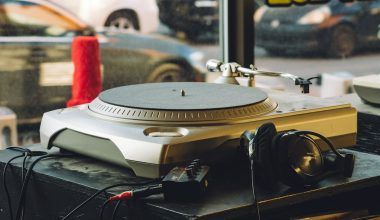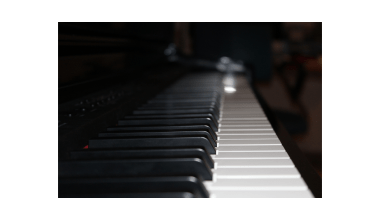What is Resonance in Sound?
Have you ever heard an echo in a tunnel, or noticed how a guitar makes a louder sound when its strings are plucked? These are all examples of a magical thing called resonance. But what exactly is resonance in sound?
In simple words, resonance happens when sound waves match the natural vibration of an object, causing it to vibrate more and make a louder sound. It’s like when someone tickles your funny bone—you just can’t help but laugh. Resonance can make objects “sing,” amplify music, and even create powerful effects in science and technology.
This blog is a fun and easy way to understand what resonance in sound means, how it works, and why it’s so important. Let’s dive in!
1. Breaking Down Resonance: The Basics
Let’s start with the basics of sound and resonance. Don’t worry—it’s simple!
- What is Sound? Sound is a type of wave created when something vibrates. For example, when you clap your hands, the air around them vibrates, creating sound waves.
- What is Frequency? Frequency means how fast something vibrates. It’s measured in Hertz (Hz). High-frequency sounds are like birds chirping, and low-frequency sounds are like thunder rumbling.
- What is Resonance? Resonance happens when a sound wave matches the natural frequency of an object, causing it to vibrate more. This makes the sound louder and stronger.
Example: Think of a swing in a park. If you push it at just the right time, it goes higher and higher. That’s resonance at work!
2. How Does Resonance Work?
Imagine you have a tuning fork, a metal object that vibrates and makes sound when hit. If you hit one tuning fork and place it near another tuning fork of the same frequency, the second one starts vibrating too—even if you didn’t touch it. Why? Because the sound waves matched perfectly. That’s the magic of resonance!
Everyday Example:
Have you ever noticed how a singer’s voice gets louder when they sing in the bathroom? That’s because the bathroom walls create resonance, making their voice sound bigger and more powerful.
3. Types of Resonance in Sound
Resonance isn’t just one thing—it happens in different ways. Let’s look at the types of resonance.
3.1 Acoustic Resonance
This happens in musical instruments or hollow objects. When air inside a space vibrates at a matching frequency, it creates a louder sound.
Example: A guitar’s body amplifies the sound of its strings through acoustic resonance.
3.2 Mechanical Resonance
This type happens when solid objects, like bridges or machines, vibrate because of sound waves.
Example: Have you ever seen a bridge shake when heavy trucks pass? That’s mechanical resonance. Engineers design bridges to handle it safely.
3.3 Structural Resonance
Large structures, like buildings and stadiums, experience resonance when sound waves or vibrations match their natural frequency.
Example: During an earthquake, resonance can cause buildings to shake more than usual.
4. Fun Experiments to Understand Resonance
Want to try some cool experiments to see resonance in action? Here are a couple of fun and safe ideas:
Experiment 1: The Tuning Fork Trick
- Take two tuning forks with the same frequency.
- Hit one and place it near the other.
- Watch how the second one starts vibrating—without being touched!
Experiment 2: Water Glass Song
- Fill glasses with different amounts of water.
- Gently tap each glass with a spoon.
- Notice how each glass makes a different sound. This is resonance in action!
5. Resonance in Music: How Instruments Work
Musical instruments use resonance to create beautiful sounds. Here’s how:
- String Instruments: Guitars, violins, and sitars use the hollow body to amplify the sound of vibrating strings.
- Wind Instruments: Flutes, clarinets, and trumpets create resonance by vibrating air columns inside their tubes.
- Percussion Instruments: Drums and cymbals rely on the surface’s vibrations to produce sound.
Fun Fact: Even your voice uses resonance! When you sing, your throat and mouth amplify the sound of your vocal cords.
6. Where Else Do We See Resonance?
Resonance isn’t just in music. It’s everywhere! Here are some real-life examples:
6.1 Medicine
Doctors use a machine called MRI (Magnetic Resonance Imaging) to take pictures of the inside of your body. Resonance helps them see details without surgery.
6.2 Technology
Your phone’s speaker and microphone work because of resonance. Radios and TVs also use resonance to tune into specific signals.
6.3 Nature
Bats and dolphins use sound waves and resonance to navigate. They send out sounds and listen for echoes to find their way.
7. Why is Resonance Important?
Resonance helps us in so many ways. It’s not just a scientific concept; it’s a part of our everyday lives.
7.1 Safety
Engineers design buildings, bridges, and airplanes to avoid dangerous resonance that could cause damage.
7.2 Entertainment
Movies, music, and concerts sound amazing because of resonance.
7.3 Communication
Phones, radios, and the internet rely on resonance to transmit and receive signals.
8. Cool Facts About Resonance
- Opera singers can break glass by singing at just the right pitch! That’s because their voice resonates with the glass’s natural frequency.
- The loud hum you hear when a car passes over a bridge? That’s structural resonance.
- Your car’s engine uses resonance to make sure it runs smoothly.
9. Can Resonance Be Dangerous?
While resonance is usually helpful, it can sometimes cause problems. For example:
- Earthquakes: Buildings can shake violently if the earthquake’s vibrations match their natural frequency.
- Machines: Too much resonance can damage engines or machinery.
That’s why engineers study resonance carefully to make things safer.
10. How Can You Find Resonance in Your Life?
Start paying attention to sounds around you. When you hear something echo or sound louder in a certain spot, resonance is likely at play.
Try This:
- Hum inside an empty room and see how the sound changes.
- Play music on a speaker in a small room and notice how the walls make the music louder.
Conclusion: Why Resonance Matters
Resonance in sound is an amazing natural phenomenon. It’s the reason why music sounds beautiful, why bridges stay strong, and why you can talk to a friend on the phone. Understanding what is resonance in sound can help us appreciate the world around us more.
So the next time you hear an echo or feel a vibration, remember—you’re experiencing the wonder of resonance!
Related Articles:
For further reading, explore these related articles:
- How to Become a Successful Music Artist in India in 2024?
- Promo Cards on Spotify: A Game Changer for Artists
- Understanding ISRC Codes and Their Importance in Tracking and Distributing Your Music
For additional resources on music marketing and distribution, visit Deliver My Tune.






